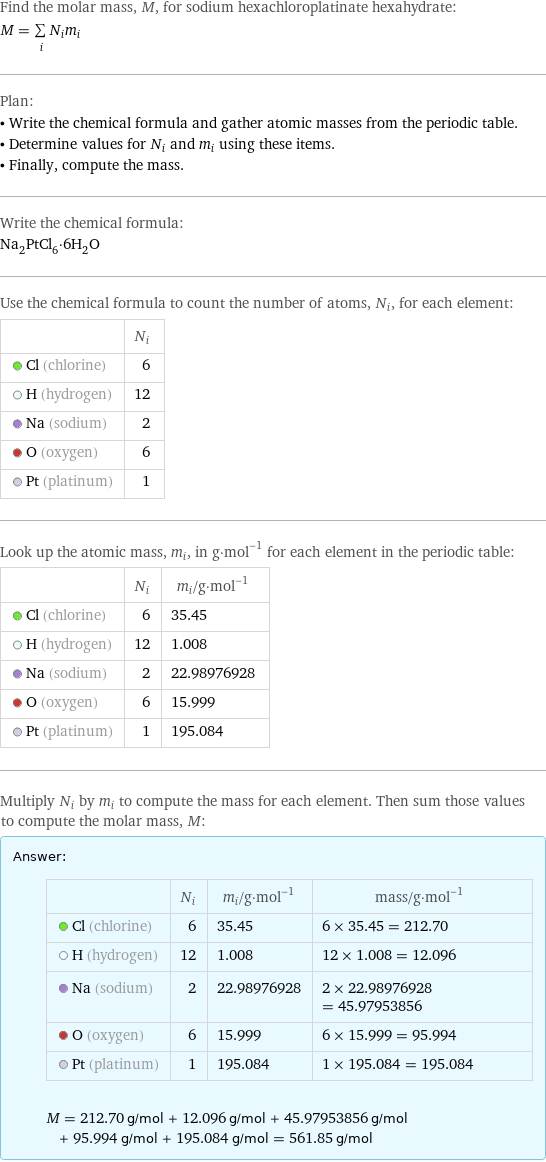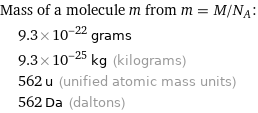Input interpretation

sodium hexachloroplatinate hexahydrate | molar mass
Result

Find the molar mass, M, for sodium hexachloroplatinate hexahydrate: M = sum _iN_im_i Plan: • Write the chemical formula and gather atomic masses from the periodic table. • Determine values for N_i and m_i using these items. • Finally, compute the mass. Write the chemical formula: Na_2PtCl_6·6H_2O Use the chemical formula to count the number of atoms, N_i, for each element: | N_i Cl (chlorine) | 6 H (hydrogen) | 12 Na (sodium) | 2 O (oxygen) | 6 Pt (platinum) | 1 Look up the atomic mass, m_i, in g·mol^(-1) for each element in the periodic table: | N_i | m_i/g·mol^(-1) Cl (chlorine) | 6 | 35.45 H (hydrogen) | 12 | 1.008 Na (sodium) | 2 | 22.98976928 O (oxygen) | 6 | 15.999 Pt (platinum) | 1 | 195.084 Multiply N_i by m_i to compute the mass for each element. Then sum those values to compute the molar mass, M: Answer: | | | N_i | m_i/g·mol^(-1) | mass/g·mol^(-1) Cl (chlorine) | 6 | 35.45 | 6 × 35.45 = 212.70 H (hydrogen) | 12 | 1.008 | 12 × 1.008 = 12.096 Na (sodium) | 2 | 22.98976928 | 2 × 22.98976928 = 45.97953856 O (oxygen) | 6 | 15.999 | 6 × 15.999 = 95.994 Pt (platinum) | 1 | 195.084 | 1 × 195.084 = 195.084 M = 212.70 g/mol + 12.096 g/mol + 45.97953856 g/mol + 95.994 g/mol + 195.084 g/mol = 561.85 g/mol
Unit conversion

0.5619 kg/mol (kilograms per mole)
Comparisons

≈ 0.78 × molar mass of fullerene ( ≈ 721 g/mol )

≈ 2.9 × molar mass of caffeine ( ≈ 194 g/mol )

≈ 9.6 × molar mass of sodium chloride ( ≈ 58 g/mol )
Corresponding quantities

Mass of a molecule m from m = M/N_A: | 9.3×10^-22 grams | 9.3×10^-25 kg (kilograms) | 562 u (unified atomic mass units) | 562 Da (daltons)

Relative molecular mass M_r from M_r = M_u/M: | 562